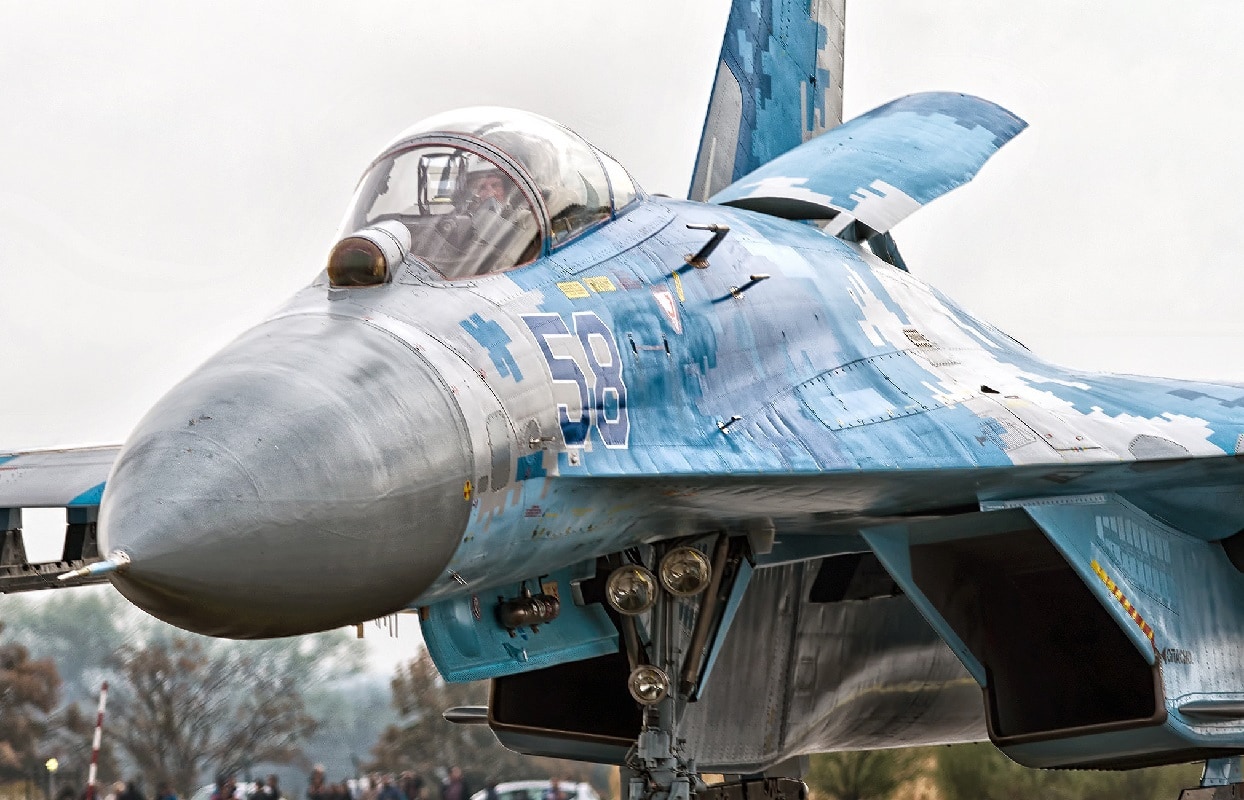As one of the most numerous aircraft in the Russian Aerospace Forces and foreign air forces from around the world, the Su-27 Flanker, as it is called by its NATO designation, will likely remain in service for years to come.
Despite its status as a solidly 4th generation aircraft, many of the air forces which employ the Flanker are heavily reliant on the plane today. The Su-27 has itself become a true family of aircraft itself, with several direct variants in service in Russia and elsewhere, including Ukraine.
Su-27, Explained
The Flanker is a fighter aircraft designed for air superiority missions. While different variants of the aircraft sometimes include updated or different equipment and systems, there are several traits that are largely constant.
With a single seat for one pilot, the Su-27 is propelled by two turbofan AL-31F engines, which help give the Flanker a range of more than 2,200 miles.
Its 10 external hardpoints give the Su-27 the capability to carrying a variety of air-to-air missiles, rockets, and unguided bombs, in addition to its 30mm autocannon.
While the fighter’s thrust-vectoring engines make it a particularly maneuverable aircraft (with a max speed of 2.35), the distinct lack of any radar-evading coating or technologies on the aircraft hampers its overall performance in combat with fighters of a similar or newer era.
Su-27 History and Derivatives
While the development of the Su-27 originally began in 1969 as a counter to the United States’ F-15 Eagle and strategic bomber fleet, it has yet to shoot down an American-made fighter or bomber of a similar era and role.
However, by the time it entered service in 1985, the Flanker’s chief designer Mikhail Simonov had expanded the capabilities of the Su-27 to make it a remarkably capable air superiority and interceptor of its generation.
After first entering the Soviet Air Force in 1985, the Su-27 has been further tweaked into several related variants. These include the Su-27K, which was designed for naval use on an aircraft carrier like Russia’s Admiral Kuznetsov, and the Su-27M variants, which improved the ground attack capabilities of the Flanker and upgraded its countermeasures.
The Su-27M was subsequently redesignated as the Su-35.
Another derivative of the Flanker is the Su-34 Fullback, which features a much-expanded capacity to carry fuel, which allows the aircraft to operate at a much greater range. Additionally, the Fullback includes several tweaks that reorient it towards a dedicated attack role instead of the air superiority role of the standard Su-27.
Su-27 Goes to War
Combat usage of the Su-27 by both Russia and Ukraine over the course of Russia’s invasion of Ukraine has seen some of the aircraft’s most significant combat usage across its service life to date.
While the Russian Aerospace Forces has primarily relied on newer aircraft and derivatives of the Su-27 to support its invasion, Ukraine has made expert use of its Flankers to down Russian jets and otherwise deny Moscow air superiority of Ukraine.
Ukraine has domestically upgraded some of its Su-27s, including its examples of the two-seater Su-27UB versions of the Flanker. China operates its own version of the Su-27, which is known as the Shenyang J-11. China reportedly possesses more than 400 J-11s of all variants, the newest of which often include a significant amount of Chinese components. Su-27s are also in use in a wide variety of countries in Africa, Central Asia, and the Indo-Pacific.
Su-27 Has a Future
While the Su-27 continues to age in comparison to newer fighter and multirole aircraft, its performance in Ukrainian hands in Russia’s invasion alone shows that the Flanker still has some fight left in it. The Su-27 and its many derivatives are clearly here to stay and will likely see significant further service on both sides of Russia’s war in Ukraine, and in other conflicts in the future.
Wesley Culp is a Research Fellow at the Center for the Study of the Presidency and Congress. He regularly writes on Russian and Eurasian leadership and national security topics and has been published in The Hill and the Diplomatic Courier. He can be found on Twitter @WesleyJCulp.

